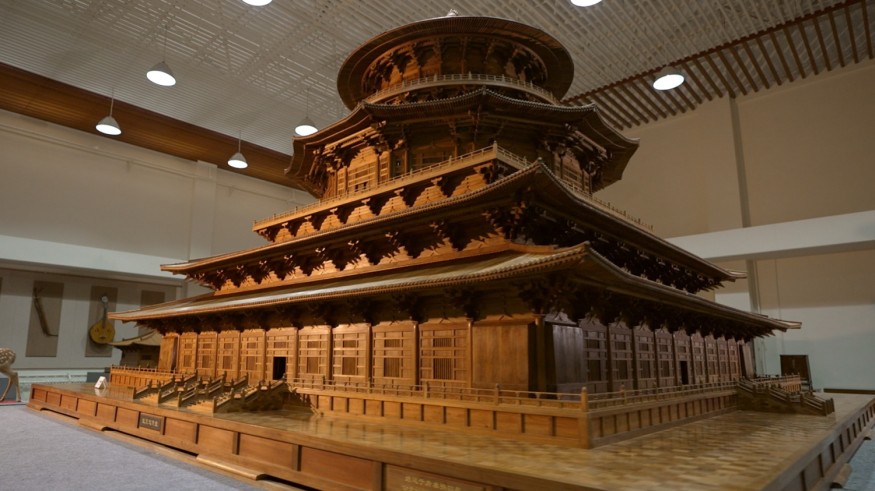Exploring a Wooden Replica of Empress Wu Zetian’s Tang Dynasty Hall

Architectural Replicas: Portals to China's Cultural Heritage
In the heart of China's rich cultural landscape, architectural replicas are more than just artistic expressions; they become windows to history and culture, offering a glimpse into the nation's heritage. At the studio of renowned Chinese architect Zhao Guangzhi, CGTN host Julian Waghann delves into the significance of a scale replica that preserves architectural brilliance and empowers the younger generation with a deeper understanding of their cultural roots.
The focal point of this exploration is a wooden replica of a hall commissioned by Empress Wu Zetian, a powerful figure who ruled during the mighty Tang Dynasty (AD 618-907). This hall, once a hub for political discussions, ritual ceremonies, and grand celebrations, is a testament to Wu Zetian's influence. Architect Zhao Guangzhi and his team undertook the challenging task of reconstructing this historical marvel based on archaeological findings from its original site in Luoyang, a former capital of the Tang Dynasty.
The architectural marvel of Wu Zetian's hall lies in its unique design. The base is square-shaped, while the roof adopts a round configuration. Although the original building has long since been lost to time, observers in the present can still appreciate the majesty and architectural grace of a bygone era thanks to this painstakingly constructed wooden replica. The replica's meticulous attention to detail is a valuable teaching tool in addition to showcasing the artisans' talent.
The Role of Architectural Replicas in Cultural Connection
During Julian Waghann's visit to the studio, he encountered young student visitors who shared his admiration for the historical and architectural significance embodied in the wooden replica. Such replicas play an important role in bridging the gap between past and present, connecting the younger generation with the cultural heritage of their ancestors.
Restoring historical structures and monuments means learning about Chinese culture's origins rather than just satisfying one's nostalgia. These replicas catalyze cross-border cultural exchange by offering palpable connections to the past. Armed with a grasp of traditional Chinese architecture, young individuals can engage in meaningful conversations about their cultural heritage with people from around the world.
Architect Zhao Guangzhi's commitment to reconstructing these architectural wonders goes beyond preserving history; it is about empowering the youth. Chinese children are made to feel proud of the richness and magnificence of their cultural heritage by the wooden replica, which serves as a symbol of cultural confidence. It reminds us that even though empires come and go, people who work to protect and celebrate culture's legacy make it live on.
In conclusion, the wooden replica of Empress Wu Zetian's Tang Dynasty Hall revives a lost architectural masterpiece and becomes a beacon of cultural enlightenment. As the younger generation engages with these replicas, they are not just witnessing history but actively participating in continuing a cultural legacy that transcends time and borders.
Fischer Homes on the Future of Personalized Home Design

Architecture's Response to the Seven Million Homes Shortage

Travis Scott Slams Victory Boyd in Explosive 'Telekinesis' Lawsuit: 'She Lied on Copyright'

From Digital Models to 3D-Printed Homes: Jaspreet Kaur Lall Explains How the Innovation Changes the Construction Industry

Future Belongs to Green Construction: Sampath Kumar Paspunoori Explains One of the Key Trends in the Construction Industry














